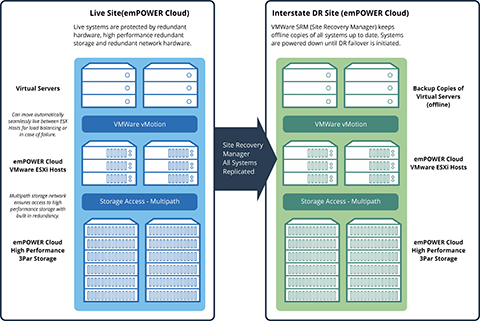Geographic redundancy – no storm in a teacup
Earlier this month, Amazon Web Services’ (AWS) experienced crippling power outage in their Sydney datacenters due to wild weather that swept across coastal New South Wales. Torrential rains and strong winds knocked out the operations of numerous AWS customers across Australia, preventing end users from accessing websites and other critical systems.
According to reports, AWS clients including Domino’s Pizza, Foxtel, The Iconic, Stan and Domain were unable to trade from mid-afternoon until as late as the next morning. Although the power was restored within about 90 minutes, it took hours for some of the systems to be rebooted and brought back online, leading to substantial losses.
As more businesses move critical applications and systems to the cloud, the impact a natural disaster or an unexpected outage can have on your business operations is greater today. Even small outages can have long term business impacts. Redundant components within a single datacentre are important and readily available; but what if the datacentre itself is hit by a natural disaster?
This is where geographic redundancy becomes important. It ensures high availability of business critical systems across multiple locations, mitigating the risk of weather outages as experienced by AWS.
Businesses can mitigate downtime by replicating applications and data across multiple ‘geo-diverse’ locations. Also termed as ‘geo-replication’, the data that is created or updated in a primary location, is asynchronously replicated to a secondary location so that the same data exists and is readily accessible in both locations.

Ideally the datacentre locations are geographically separated (Melbourne and Sydney for example), so that should one of the locations experience a catastrophic event and cannot be restored, the secondary location can quickly and seamlessly take over the primary role. All traffic is automatically rerouted to the secondary site with minimal service downtime for users.
In order for businesses to ensure that critical data and applications remain highly available, geographical redundancy is critical. The blueAPACHE Cloud environment is built on a world-class service provider platform that is located in three core geographically diverse datacentres along Australia’s eastern seaboard. This redundancy enables us to provide a 99.999% uptime guarantee.
To learn more about geographic redundancy, or business continuity and disaster recovery, contact the blueAPACHE account team.

